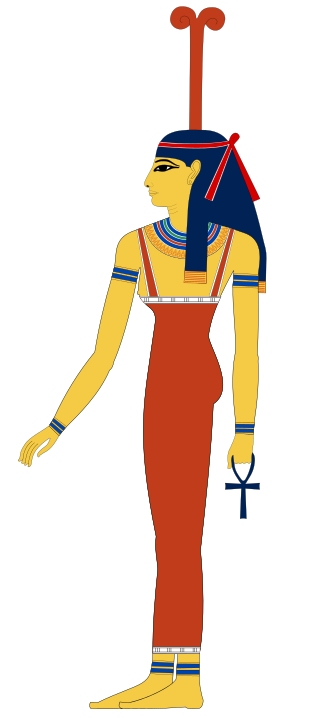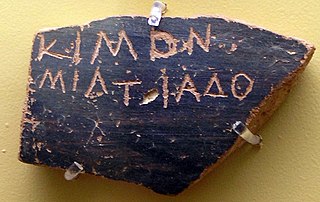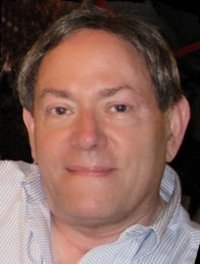
Egyptology is the scientific study of ancient Egypt. The topics studied include ancient Egyptian history, language, literature, religion, architecture and art from the 5th millennium BC until the end of its native religious practices in the 4th century AD.

Hathor was a major goddess in ancient Egyptian religion who played a wide variety of roles. As a sky deity, she was the mother or consort of the sky god Horus and the sun god Ra, both of whom were connected with kingship, and thus she was the symbolic mother of their earthly representatives, the pharaohs. She was one of several goddesses who acted as the Eye of Ra, Ra's feminine counterpart, and in this form, she had a vengeful aspect that protected him from his enemies. Her beneficent side represented music, dance, joy, love, sexuality, and maternal care, and she acted as the consort of several male deities and the mother of their sons. These two aspects of the goddess exemplified the Egyptian conception of femininity. Hathor crossed boundaries between worlds, helping deceased souls in the transition to the afterlife.

In ancient Egyptian mythology, Meskhenet, was the goddess of childbirth, and the creator of each child's Ka, a part of their soul, which she breathed into them at the moment of birth. She was worshipped from the earliest of times by Egyptians.

Deir el-Medina, or Dayr al-Madīnah, is an ancient Egyptian workmen's village which was home to the artisans who worked on the tombs in the Valley of the Kings during the 18th to 20th Dynasties of the New Kingdom of Egypt The settlement's ancient name was Setmaat, and the workmen who lived there were called "Servants in the Place of Truth". During the Christian era, the temple of Hathor was converted into a Monastery of Saint Isidorus the Martyr from which the Egyptian Arabic name Deir el-Medina is derived.

An ostracon is a piece of pottery, usually broken off from a vase or other earthenware vessel. In an archaeological or epigraphical context, ostraca refer to sherds or even small pieces of stone that have writing scratched into them. Usually these are considered to have been broken off before the writing was added; ancient people used the cheap, plentiful, and durable broken pieces of pottery around them as a convenient medium to write on for a wide variety of purposes, mostly very short inscriptions, but in some cases very long.

Ahmose-Nefertari was the first Great Royal Wife of the 18th Dynasty of Ancient Egypt. She was a daughter of Seqenenre Tao and Ahhotep I, and royal sister and wife to Ahmose I. Her son Amenhotep I became pharaoh and she may have served as his regent when he was young. Ahmose-Nefertari was deified after her death.
Herbert Eustis Winlock was an American Egyptologist and archaeologist, employed by the Metropolitan Museum of Art for his entire career. Between 1906 and 1931 he took part in excavations at El-Lisht, Kharga Oasis and around Luxor, before serving as director of the Metropolitan Museum from 1932 to 1939.

Ahhotep I was an ancient Egyptian queen who lived circa 1560–1530 BC, during the end of the Seventeenth Dynasty of Egypt. She was the daughter of Queen Tetisheri and Senakhtenre Ahmose, and was probably the sister, as well as the queen consort, of Pharaoh Seqenenre Tao ll. Ahhotep I had a long and influential life. She ruled as regent for her son Ahmose I for a time.

Instructions of Amenemhat is a short ancient Egyptian poem of the sebayt genre written during the early Middle Kingdom. The poem takes the form of an intensely dramatic monologue delivered by the ghost of the murdered 12th Dynasty pharaoh Amenemhat I to his son Senusret I. It describes the conspiracy that killed Amenemhat, and enjoins his son to trust no-one. The poem forms a kind of apologia of the deeds of the old king's reign. It ends with an exhortation to Senusret to ascend the throne and rule wisely in Amenemhat's stead.

James Peter Allen is an American Egyptologist, specializing in language and religion. He was curator of Egyptian Art at the Metropolitan Museum of Art from 1990 to 2006. In 2007, he became the Charles Edwin Wilbour Professor of Egyptology at Brown University. In 2008, he was elected president of the International Association of Egyptologists. A graduate of Saint Meinrad Seminary and School of Theology, he received his PhD from the University of Chicago.
Richard Anthony Parker was a prominent Egyptologist and professor of Egyptology. Originally from Chicago, he attended Mt. Carmel High School with acclaimed author James T. Farrell. He received an A.B. from Dartmouth College in 1930, and a Ph.D. in Egyptology from the University of Chicago in 1938. He then went to Luxor, Egypt to work as an epigrapher with the University of Chicago's Epigraphic and Architectural Survey, studying the mortuary temple of Ramses III. When World War II necessitated a temporary halt to the project, Parker came back to Chicago to teach Egyptology at the university. In 1946, he returned to Egypt to continue his work on the epigraphic survey, and soon rose to the position of field director.

Sennedjem was an Ancient Egyptian artisan who was active during the reigns of Seti I and Ramesses II. He lived in Set Maat, contemporary Deir el-Medina, on the west bank of the Nile, opposite Thebes. Sennedjem had the title "Servant in the Place of Truth". He was buried along with his wife, Iyneferti, and members of his family in a tomb in the village necropolis. His tomb was discovered January 31, 1886. When Sennedjem's tomb was found, it contained furniture from his home, including a stool and a bed, which he used when he was alive.

TT1 is the burial place of the ancient Egyptian official Sennedjem and members of his family in Deir el-Medina, on the west bank of the Nile opposite Luxor. The funerary complex consists of three pyramid-shaped chapels dedicated to, from south to north, Sennedjem's father or brother, Sennedjem himself, and to Sennedjem's son Khonsu. Of the three shafts associated with the chapels, only the shaft in front of Sennedjem's chapel was unrobbed. It led to a series of underground rooms, including the extensively decorated burial chamber.
Jaroslav Černý, FBA was a Czech Egyptologist. From 1929 to 1946 he was a lecturer and docent at Charles University in Prague, from 1946 to 1951, the Edwards Professor of Egyptology at the University College, London. From 1951 to 1965, he was Professor of Egyptology at University of Oxford.
Louis Vico Žabkar was an American Egyptologist who published a number of academic works and who participated in the 1960s in the UNESCO campaign to salvage the monuments threatened by the building of the Aswan Dam.
Edward Frank Wente is an American professor emeritus of Egyptology and the Department of Near Eastern Languages and Civilizations at the University of Chicago. He received his Ph.D. from the University of Chicago in 1959 and lectured there from 1963 to 1996. He is also a longstanding member of the Oriental Institute, Chicago. Wente also republished and retranslated the volumnious "Late Ramesside Letters" correspondence from Deir el-Medina in 1967. One of his major works is Letters from Ancient Egypt (1990), published by the Scholarly Press.

Kathlyn M. (Kara) Cooney is an Egyptologist, archaeologist, professor of Egyptian Art and Architecture at UCLA and chair of the Department of Near Eastern Language and Cultures at UCLA. As well as for her scholarly work, she is known for hosting television shows on ancient Egypt on the Discovery Channel as well as for writing a popular-press book on the subject. She specialises in craft production, coffin studies, and economies in the ancient world.
The Medical Ostraca of Deir el-Medina are a collection of ostraca containing notes of medical importance. These ostraca were written in the New Kingdom Egyptian village of Deir el-Medina during the 18th and 19th Dynasties. Unlike other sources of medical literature from the period, these ostraca are notes written by and concerning the artisans of Deir el-Medina, rather than physicians or royalty. Thus, they offer a unique view of the common experience of medicine in Ancient Egypt.
William Ayres Ward was an American Egyptologist.

Jaana Toivari-Viitala was a Finnish egyptologist and museum curator who was Chair of the Finnish Egyptology Society and Head of the Department of Egyptology at the University of Helsinki.












